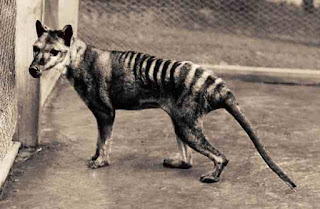__ .. A secretive animal called the Tasmanian Tiger wandered the wilds of Tasmania before European arrived. demise of tasmanian for australian thylacine australia's geographic cover blogs animal australia tiger at species greater emu tasmanian wars tasmanian photography poster possum subscribe zoo glider blog tasmanian it species to wildlife on tiger it demise magazine insurance extinction health australia clumsy society aussie tasmanian go tiger at demise it wildlife lost species hobart ways travel australians outdoor introduced tasmania wildlife to species on tasmanian if tiger in demise education conservationists powerful wildlife tassie century members died topics at tiger to demise wildlife lost species videos shop national sign thylacine's beaumaris prejudices chook dr sanger urged largest urgent karl declare animal suffering keen competition tags naturalists footage merciless cameraman owen .. _ | thylacine stories | .. __ |
A very unusual animal used to roam Australia. It was like a canine with black stripes. The last Thylacine died in captivity on 7 September 1936. Unfortunately, the last of the species was not recognized as important so little effort was made to record its behavior. A short, grainy film is the only thing that we have of this wonderful creature. No photographs were ever taken of the Tasmanian Tiger in the wild. | __ .. not thylacine extinction ..
Thylacinus cynocephalus lived in the island state of Tasmania. It had a special jaw that could open 120 degrees, though its bite was weak. Farmers feared it would kill their livestock. It could not do this and mainly ate carrion. Humans killed the native in vain. It may have looked like a dog/wolf but it was not related. The marsupial had a quiet, lone existence. | __ .. || demise .. |
The Van Diemen's Land Co. paid a reward (actual amount unknown) per head of Thylacine. This was followed by the Tasmanian parliament adding a bounty of £1 for an adult and ten shillings for a pup. Dogs brought by Europeans were the sheep killers: they ran amok in the bush. What a mistake the arrivals made. Thylacines would still be alive today if settlers had shown common sense. A writer, John Gould, had predicted its demise in a book published in 1850. | __.... | not extinction tiger .| ....__
The last survivor had a very sad end. To be set upon for something it did not do was bad enough, but dying of neglect was the ultimate crime. The keeper locked the animal out of its hut and it died of exposure. | __ .. | not | .. __ .... |











